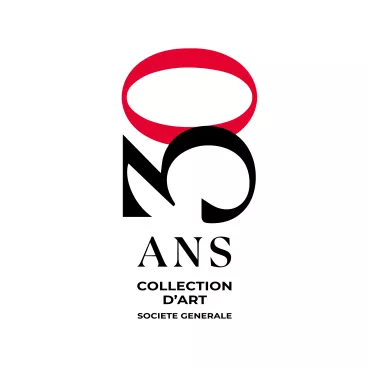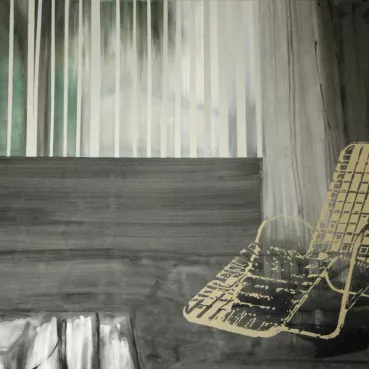
Génération !
Curator: Julia Marchand
Selected artworks from the Societe Generale Art Collection in Paris, on display from November 26, 2025 to June 30, 2026 at L’Arsenal, headquarters of Societe Generale Luxembourg.
Generation! brings together the works of six artists from different generations and backgrounds. The diversity of the artistic approaches presented invites an intergenerational reading of the Societe Generale Art Collection. Three generations converse on the wall of the Arsenale: the Baby Boomers (with David Hockney), Generation X (Julien Prévieux, Anne Neukamp, Françoise Pétrovitch), and the Millennials, themselves divided between Gen Y (Ymane Chabi-Gara) and Gen Z (Juliette Green).
Baby Boomers are blamed for having their post-war optimism frozen by privilege; and the youngest are thought to retreat into a form of digital narcissism. But, going beyond these simple clichés, what do these works tell us?
Juliette Green, the youngest of the exhibited artists, instead addresses the question of transmission: a theme not often expected from a Gen Z artist. Through a diagram composed of drawings, she recounts the improbable journey of a recipe from the 11th century BC, passed down from mother to daughter before eventually reaching the hands of a young father today. The work “How Does a Recipe Travel Through Time?” (2022) explores the invisible circulations between generations, between legacies and reinterpretations. This story of passage and the reversal of preconceived ideas is also the story of the exhibition itself: what if we changed perspective?
David Hockney, a major artistic figure, notably linked to Pop Art, represents himself through a self-portrait created on an iPad, a tool he has used since their introduction in 2010. His work reflects a constant curiosity, fueled by technological advances. In contrast, Juliette Green chooses a simple, direct medium that disregards technology.
Ymane Chabi-Gara expresses teenage anguish through the figure of the hikikomoris, in works that blend painting and collage. Her gaze focuses on withdrawn communities, emotionally frozen, while Françoise Pétrovitch’s work questions the melancholic nature of a landscape or a child. Between the two, a shared concern for empathy and the representation of individuals both present and absent emerges.
Julien Prévieux and Anne Neukamp, meanwhile, follow a more analytical vein: their works explore schematic, modeled representations as an autonomous language. A kind of extension of the visual experiments initiated by Hockney’s generation—a post-Pop view of our image and sign-saturated environment.
The exhibition highlights the points of convergence between these artists from different generations: their relationship to technology, forms of storytelling, self-representation and the representation of others, observations of daily life… and the emergence of new sensibilities. It offers an unrestricted reading of generations and questions the boundaries too often imposed on them. Rather than opposing them, it suggests seeing what is shared between them.
Julia Marchand


